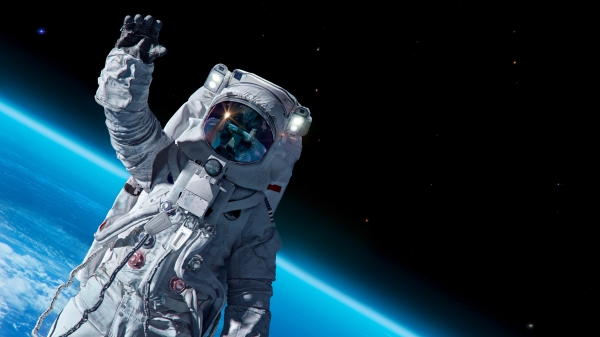Prototyping facility will give students, startups access to semiconductor space

Photo of ASU's MacroTechnology Works facility by Charlie Leight/ASU News
The new cutting-edge prototyping facility announced recently by Arizona State University and Applied Materials Inc. will not only speed the time it takes for lab innovations to become real-life solutions, it also will allow ASU’s students to get the hands-on experience they need to become part of the new microelectronics workforce.
The $270 million Materials-to-Fab Center, aided by the Arizona Commerce Authority, will bring Applied Materials’ semiconductor-manufacturing equipment to the university’s MacroTechnology Works building at ASU Research Park.
Preparing students for the technology jobs of the future is critical – and a major goal of the New Economy Initiative, according to Sally Morton, executive vice president of ASU’s Knowledge Enterprise.
“When you sit with industry leaders and say, ‘What is keeping you up at night?’ they say, ‘people’ — the number of people and the diversity and inclusion of people,” she said.
“They see ASU at the forefront of providing an excellent workforce.”
Another important aspect of the new facility is finding a way to speed the time from lab innovation to prototype to commercial production.
“Things are slow. We do something at the university and it might take awhile to get into production,” Morton said.
“We need to speed up. The industry is moving so quickly and we have to get these ideas more quickly into production.”
That time lag is referred to as the "Valley of Death.”
“I think of this center as a physical space, intellectual space, educational space — all of those things working as a bridge across that Valley of Death,” she said.
“And it’s a bridge that students can walk on and faculty can walk on and industry can walk on together — that’s what makes it so important.”
Video courtesy Applied Materials
Kyle Squires, vice provost of engineering, computing and technology at ASU, said that Applied Materials’ equipment is world class.
“The university was very strategic about ensuring that our ASU faculty and students, properly trained, can have access, and that’s a major advantage. They’re going to do better research and be skilled users,” he said.
And that access will have ripple effects in the Ira A. Fulton Schools of Engineering, said Squires, who also is dean of the Fulton Schools.
“It creates capability, and that draws faculty to come here and motivates faculty who are already here to direct research that utilizes those tools,” he said.
“That, in turn, increases our reputation and our ability to recruit students and it starts to create a more robust pipeline of going from ideas in the lab to making prototypes and training students, and that’s a very unique ecosystem,” he said.
And ASU’s partners will benefit too.
“This is a resource for the entire state,” Morton said.
“Startups don’t have the money to buy this equipment. If they have an idea for a semiconductor wafer and want to produce it, they will now have that access.”
Morton said the machines or tools in the Materials-to-Fab Center test different materials and etchings on silicon wafers, a key component of electronic applications.
“One interesting thing to me is that the facility will be open 24/7,” she said.
“These are expensive machines and they want them running all the time. That doesn’t mean we’ll be taking students at 3 a.m., but we’ll be staffing the MacroTechnology Works to keep it open 'round the clock.”
The new project is an expansion of an existing partnership between ASU and Applied Materials.
“They’ve worked with ASU and have been impressed with our innovation and our commitment to inclusion,” Morton said.
“We’re a tested partner with them. This is an enhancement of that partnership. It’s been earned.”
More Science and technology

Brilliant move: Mathematician’s latest gambit is new chess AI
Benjamin Franklin wrote a book about chess. Napoleon spent his post-Waterloo years in exile playing the game on St. Helena. John Wayne carried a set and played during downtime while filming “El…

ASU team studying radiation-resistant stem cells that could protect astronauts in space
It’s 2038.A group of NASA astronauts headed for Mars on a six-month scientific mission carry with them personalized stem cell banks. The stem cells can be injected to help ward off the effects of…
Largest genetic chimpanzee study unveils how they’ve adapted to multiple habitats and disease
Chimpanzees are humans' closest living relatives, sharing about 98% of our DNA. Because of this, scientists can learn more about human evolution by studying how chimpanzees adapt to different…